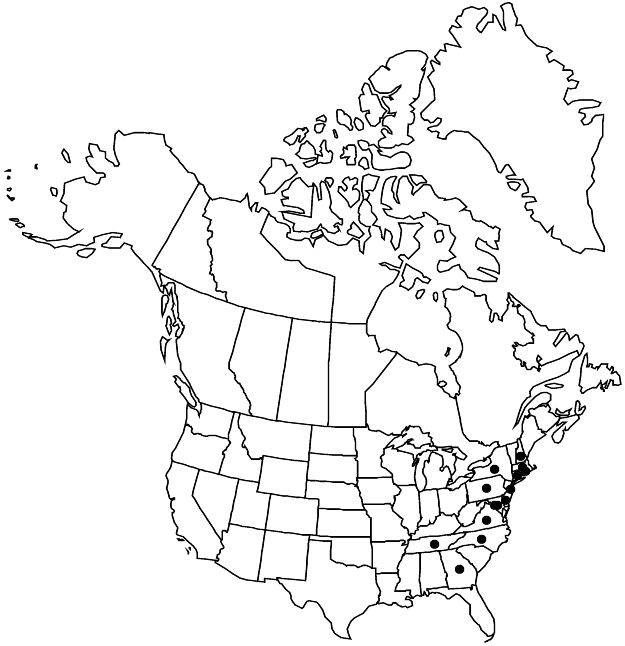Crocanthemum propinquum
Bull. Torrey Bot. Club 40: 615. 1913.
Herbs. Stems scattered on horizontal rootstocks, ascending to erect, 10–27(–35) cm, stellate-pubescent to stellate-tomentose. Leaves cauline; petiole 2–5 mm; blade narrowly elliptic to oblanceolate, gradually narrowed to base, 10–30 × 3–6(–8) mm, surfaces stellate-tomentose abaxially, stellate-pubescent adaxially, without simple hairs, lateral veins raised abaxially. Inflorescences terminal, cymes; chasmogamous flowers 2–6 per cyme, cleistogamous in glomerules, 1–6 flowers per glomerule, on lateral leafy branches 1–3 cm, flowering 1–3 months later than chasmogamous. Pedicels (2–)8–14(–22) mm; bracts 1.5–3.5 × 0.3 mm. Chasmogamous flowers: outer sepals linear, 1–3(–4) × 0.4–0.9 mm, inner sepals ovate-elliptic, 5–8 × 2.3–4.5 mm, apex acute; petals obovate, 8–10(–13) × 6–12 mm; capsules 3.7–5.3 × 3–4 mm, glabrous. Cleistogamous flowers: outer sepals rudimentary, 0.2–0.5 × 0.2 mm, inner sepals ovate, 2–2.5 × 1.5–2.2 mm, apex acute; capsules 1.5–2.2 × 1.3–2 mm, glabrous.
Phenology: Flowering May–early Jul.
Habitat: Open woodlands, rock outcrops, sandplain grasslands, maritime heathlands, clearings, fields
Elevation: 0–1500 m
Distribution

Conn., Del., D.C., Ga., Md., Mass., N.H., N.J., N.Y., N.C., Pa., R.I., Tenn., Va.
Discussion
The shorter stature, tiny outer sepals on cleistogamous flowers, and horizontal rootstocks distinguish Crocanthemum propinquum from C. bicknellii, which is often twice as tall, has elongate sepals, and has a caudex. Crocanthemum propinquum is disjunct from the coastal plain of Virginia to the southern Appalachian Mountains of Georgia, North Carolina, and Tennessee.
Selected References
None.